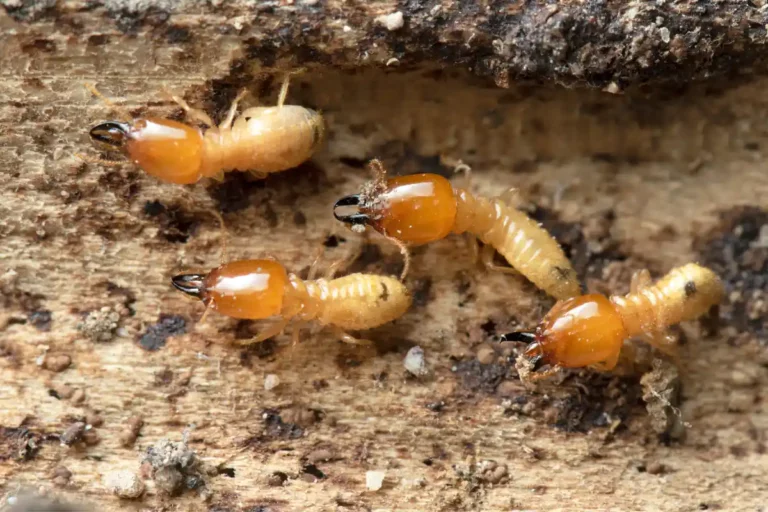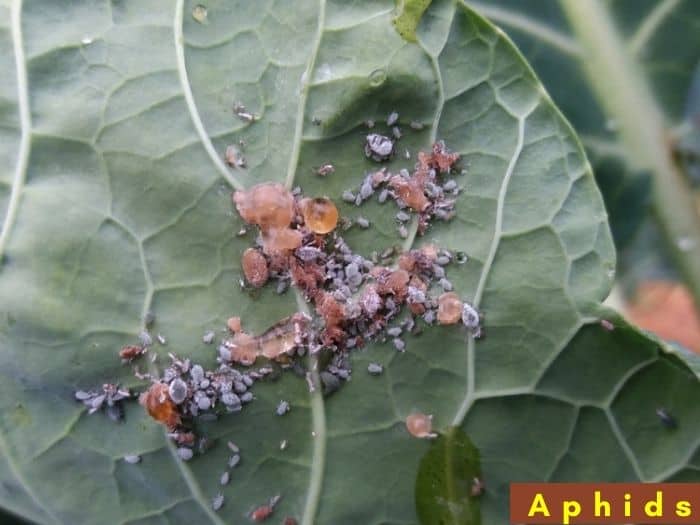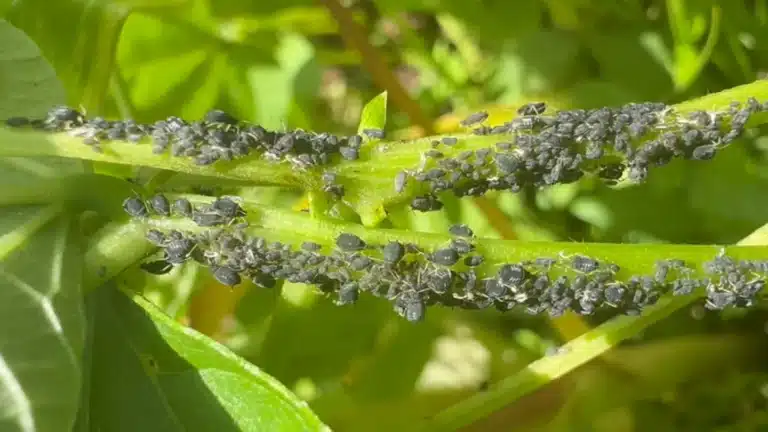12 Predators That Eat Spider Mites
Spider mites thrive well in a dry and hot environment. As a result, these insects multiply in millions quickly, leaving behind a trail of damage to plant leaves, fruits, and stems.
Getting rid of these mites, which are over 1200 species, is not easy. Besides, pesticides might not achieve the results you want because of the pesticide resistance that mites reveal throughout continuous use. More so if not applied well.
Moreover, using pesticides and spraying the spider mites using chemicals results in significant expenses, yet the result might be disappointing.
Therefore, biological and natural predators have proved effective and safe for plants and humans when taming these bugs. In addition, the introduction of natural predators to your outdoor and indoor plants will help counter the spread of the mites.
These natural enemies reproduce in large numbers to counter and feed on spider mites at different life cycle stages. This includes the eggs, larvae, nymphs, and adult spider mites.
The widespread and known spider mites that affect houseplants and outdoor plants include the following
- Carmine spider mites
- Red spider mite ( Tetranychus Ludeni)
- Two-spotted spider mite (Tetranychus urticae)
Lets us look at the predators that eat the above spider mites
Predators That Eat Spider Mites
Biological Predators have shown encouraging results within four weeks of introduction to plants. The trend continues until all the mites have been wiped out in a short time. Interestingly, they not only attack the adult spider mites but all stages of the bug’s life cycle.
The following predators have proved to be effective in taming and eliminating spider mites on outdoor and indoor plants across the globe.
- Phytoseiulus Persimillis Californius
- Andersoni
- Green lacewings
- Stethorus
- Whiteflies
- Scale insects
- Orius
- Feltiella
- Ladybugs
- Lacewings
- Predatory thrips
- Big-eyed bugs
Let us look at the three known spider mites, two-spotted spider mites, carmine spider mites, and the red spider mite. The following predators offer a solution in managing their breeding and wide-spreading
1. Phytoseiulus Persimillis Californius
A Two-spotted spider mite is a bug found on plants across the globe. Their reproduction rate is high, making it impossible to control indoor plants by spraying chemicals and pesticides.
Therefore, to effectively tackle the spread of the two-spotted spider mite, introduce the phytoseiulus Persimillis predator to your indoor and outdoor plants
The phytoseiulus persimillis is a predator bug produced across the globe to tame the two-spotted spider mite. When introduced to indoor plants, the predator feeds on spider mites at every life cycle stage. Also, you can introduce them to your garden if you notice the mite infestation.
Besides, the immature Persimillis predator takes eight days. Therefore you can introduce this predator bug at the onset of an infestation in your greenhouse.
For outdoor/garden infestation, the adult Persimillis will eliminate the two-spotted spider mite in 36 days.
2. Feltiella acarisuga
Carmine spider mites attack outdoor and indoor plants leaving visible signs that include yellowish color on the leaves, abnormal leaf fall, and necrotic areas. In severe infestation, the plant turns yellow, resulting in death.
To manage the Carmine spider mites naturally, you can introduce the Feltiella acarisuga
Predator to your plants
This bug is known to attack the carmine spider mite at all stages of mite reproduction.
First, its eggs hatch into larvae that attack the Carmine spider mite colonies as it crawls around the plants.
To encourage the reproduction of Feltiella predators, keep the plant moist at all times because they are the only predator species that thrives and lays eggs in a humid environment.
And the good news; this predator can help extinguish the spider mites on plants in-house and outdoor. But it is more effective when introduced on indoor plants, mainly the greenhouse.
You can also get rid of the Carmine Spider mite by introducing predators like the green lacewing, ladybug, Phytoseiulus Persimillis, and predatory thrips.
2. Ladybug and Predatory Thrips
The red spider mite species is a bug that spreads across agricultural plants in the world. Besides, it is a tiny mite that cannot be visible to the naked eye.
Moreover, the red spider mite can reproduce in millions in a short period of three days, making it hard for pesticides to curb their spread.
Therefore to manage their spread and prevent their reproduction, introduce Ladybug and Predatory Thrips Predators to your crops
These predators attack the spider mites on plants that are heavily infested by feeding on the eggs, larvae, nymphs, and adult mites. In addition, ladybugs fly around the plants attacking the red spider mite and feeding on their eggs.
Interestingly, the ladybug can feed on 100 spider mites each day. Therefore, the larger the predator colony, the more they become effective in getting rid of the spider mites quickly.
Nevertheless, the Ladybug predator does not survive when exposed to pesticides and chemical sprays. On the contrary, the predatory thrips are resistant to pesticides making them more applicable to outdoor plants.
4. Green Lacewing
The green Lacewing predator is a general-purpose bug that attacks the red spider mites on plants found indoors and in the garden. Moreover, all stages of its life cycle are effective in killing the spider mites on plants.
To manage the mites at the onset of an infestation, introduce the green lacewing eggs to your plants. But if the infestation is severe, consider the crawling lacewing larvae that will feed and attack the spider mites.
However, the adult Green Lacewing will be more appropriate for controlling an infestation in outdoor plants like the garden.
Pros and Cons of Using Predators to Control Spider Mites
Pros
The following are the advantages of using predators to eliminate spider mites compared to pesticides and sprayed chemicals.
- Using predators helps minimize the health problems like allergies, skin itching, and breathing problems in human beings. Such risks occur when pesticides and chemical sprays are used to control or eliminate spider mites.
- Using predators conserves the environment by reducing air pollution/contamination and soil leaching.
- Predators produce microorganisms that are beneficial to the soil, thus improving soil aeration.
- Using predators makes it easy to identify and get rid of a specific species of spider mite using a particular predator.
- Predators offer a long-term solution in controlling and getting rid of spider mites.
Cons
- To acquire a specific predator for specific spider mites might be costly.
- Predators offer a long-term solution to mite’s control. However, you will have to be patient before realizing these results. Moreover, it is a slow process that will need time for the predators to attain their full potential.
- Some Predators may also cause parasite infections in humans when they come in contact with them.
Do Bees Eat Spider Mites?
Honey Bees fall in a class of beneficial insects that help control and get rid of spider mites. However, to lure the bees into the garden, you have to include plants like the Dill (Anethum spp) which will attract the bees while in such of food.
As they sap the flower nectars, the bees will feed on the spider mite larvae and eggs, thus controlling and getting rid of these bugs.
Do Wasps Eat Spider Mites?
Yes.
Predatory wasps fall in the category of beneficial insects that help control bugs. No wonder the wasps feed on any pests they come across, including spider mites.
Some of the predatory wasps that hunt and feed on spider mites include Bald-faced hornet, yellow jackets, and paper wasps.
Another type of wasp that can help control the spider mite is the parasitic wasp. It lays eggs in the spider mites, which in turn hatches into larvae that will feed on the spider mites.
But, it would help if you took care when you get in touch with these types of wasps because they sting to defend themselves.





![How to Get Rid of White Fuzzy Mold on Plants [Powdery Mildew]](https://gardenine.com/wp-content/uploads/2021/04/White-fuzzy-mold-on-plants-powdery-mildew.jpg)
